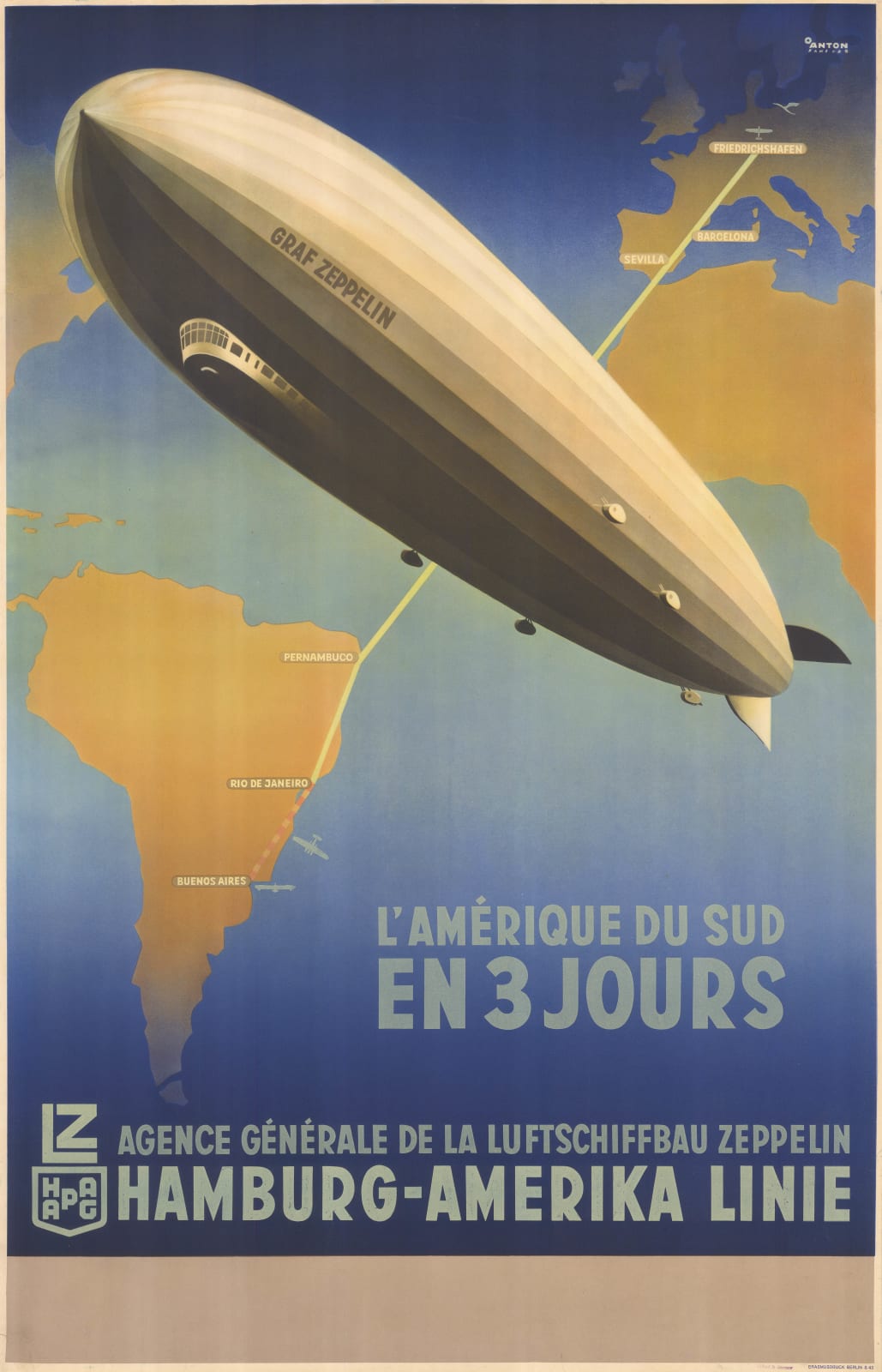Ottomar Anton
100 x 64 cm
The featured image in this poster is the LZ 127 Graf Zeppelin, a hydrogen-filled, rigid airship that flew from 1928-1937. It was named for Count (‘Graf’ in German) Ferdinand von Zeppelin, an early German airship designer. Zeppelin’s company, Luftschiffbau Zeppelin manufactured Graf Zeppelin, which was envisioned and operated by Hugo Eckener, and designed by Ludwig Dürr. The airship was the largest craft of its kind at the time and it offered the first commercial transatlantic passenger flight service. It made history by being the first airship to circumnavigate the globe, with a nonstop voyage over the Pacific Ocean.
The poster illustrates a large zeppelin centred on a background of vivid blue Atlantic Ocean and golden yellow continents. The poster also features the zeppelin’s flight path, from Freidrichshafen in Germany to Barcelona and Sevilla in Spain, across the ocean, then stops in Pernambuco and Rio de Janeiro in Brazil, and finally a dotted line connects the last leg of the route from Rio to Buenos Aires. Bold typography dominates the lower half of the poster, proclaiming in French, ‘L’amerique du Sud en 3 Jours,’ (South America in Three Days), and ‘Agence Générale de la Luftschiffbau Zepplin, Hamburg-Amerika Linie,’ the company who owned and operated the zeppelin. Multiple versions of this poster were printed, with variations in the language of the text, as well as the destinations offered in Europe.
The Graf Zeppelin was highly successful for its nine-year career, completing 590 flights and travelling more than 1.7 million kilometres (1,056,000 miles). It crossed the ocean 144 times, transporting 13,110 passengers; the ship could carry a forty-person crew and twenty-four passengers at a time. The zeppelin was further used in propaganda campaigns when the Nazi Party gained power in the 1933, and it was decommissioned by 1937 after the Hindenburg Disaster.
Printed colour. Framed. [AMER2388]


